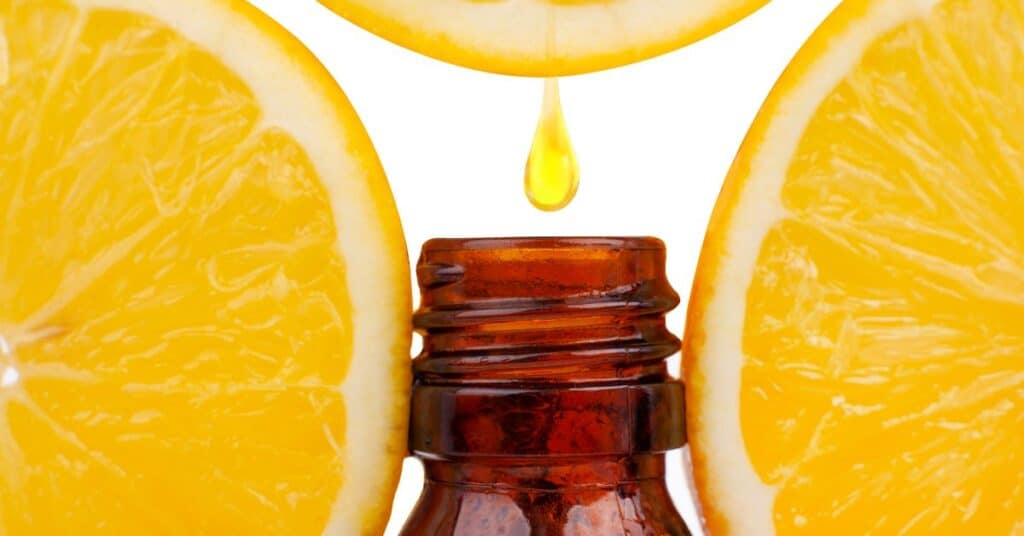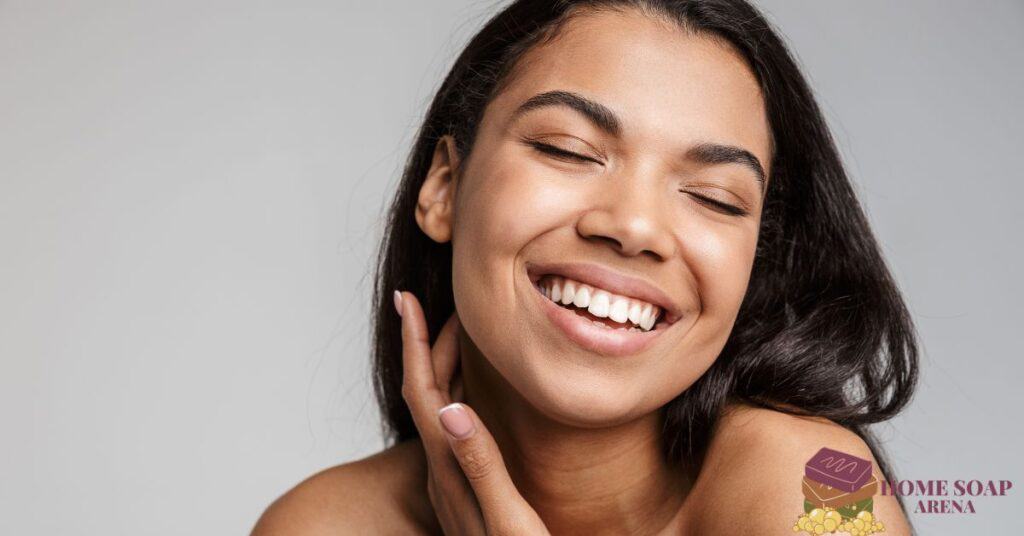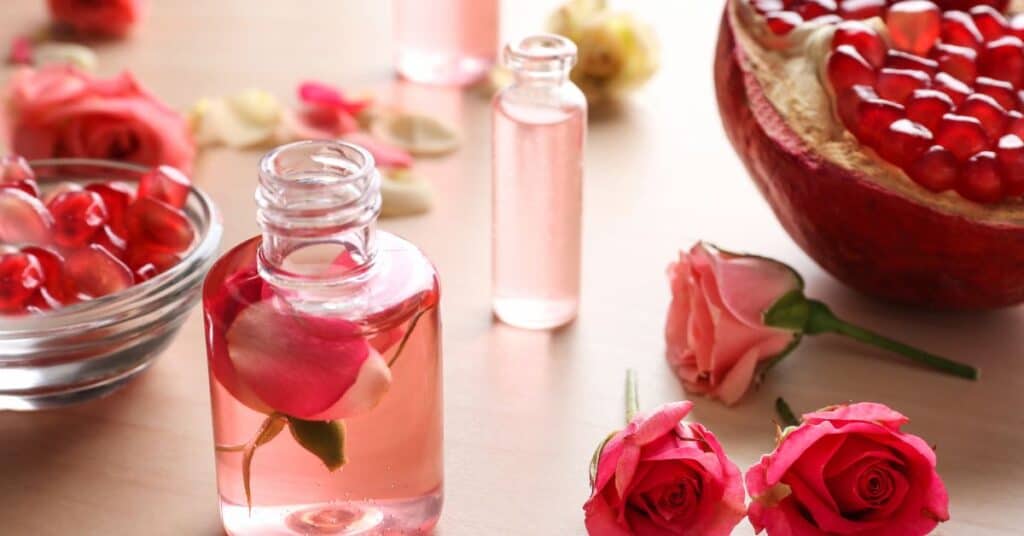Table of Contents
- What are the benefits of using essential oils for Scenting soap?
- What Essential Oils Smell Good Together For Soap?
- Top Essential Oils For Scented Soap
- How Much Essential Oil To Scent Soap and How To Measure Essential Oils
- Conclusion
Are there essential oils for scented soap? Yes! And that is our discussion in this article.
As a soap maker, essential oils don’t just contribute scents to my soap but also contain therapeutic benefits.
One of the most essential aspects of soap making is choosing the right scent for your soap. Scent can affect your mood, your health, and your preferences.
It can also make your soap stand out from the crowd and reflect your personality and brand, making it more appealing and enjoyable to use.
In this blog post, we will explore some of the best essential oils for soap making, how to use them safely and effectively, and some tips and recipes to inspire you.
What are the benefits of using essential oils for Scenting soap?
Essential oils enhance your soap in many ways, depending on the type and amount of oil you use.
Essential oil is essential in the sense that it contains the essence of the plant’s fragrance—the characteristic aroma of the plant from which it is derived.
Some of the benefits of using essential oils for soap making are:
– They create a variety of scents, from floral to citrus to spicy, that can suit your personal preference and mood.
– They have positive effects on your skin, such as moisturizing, cleansing, soothing, or healing, less sensitizing depending on the skin type and on the oil you choose.
– They have aromatherapy benefits, such as relaxing, uplifting, energizing, or balancing, depending on the oil you choose.
– They make your soap more natural and eco-friendly, as they are derived from plants and do not contain synthetic chemicals or additives.
You are getting the benefits of the chemicals in the eucalyptus, which can be beneficial for the respiratory system.
It is an incredible experience and helps you go to sleep.
What Essential Oils Smell Good Together For Soap?
So, although we need to be careful about the maximum topical dilutions of your essential oils, they’re less vital with soap because they’re rinsing right off.
And that’s wonderful. So you can really play around with some scents that you would not want to be putting on your skin, like some of the phototoxic citrus oils.
However, this can vary depending on the strength and quality of the oils. You can also use a blending wheel or a fragrance pyramid to help you create your blends.
- Thyme, Lemon, and Eucalyptus
- Orange and patchouli
- Lavender- anything on this list base note is the heaviest and longest-lasting scent, such as cedar, patchouli, or vetiver.
- Peppermint- lavender, patchouli, tea tree, eucalyptus, rosemary and anise
- Lavender, Peppermint, Wintergreen, Camphor, Eucalyptus, and Rosemary
- Lemongrass- lavender, patchouli, tea tree, eucalyptus and rosemary
- Clove Bud, Orange, Cinnamon, Eucalyptus, Rosemary, and Thyme
- Orange- lavender, anise, patchouli, and lemongrass
- Patchouli- lavender, lemongrass, tea tree, orange, geranium rose and peppermint.
- Geranium Rose- lavender, anise and patchouli
- Cinnamon, orange, and clove
- Tea Tree- lavender, peppermint, eucalyptus, lemongrass, anise, patchouli and rosemary
- Eucalyptus- lavender, peppermint, lemongrass, rosemary, anise and tea tree
- Rosemary- lavender, peppermint, lemongrass, tea tree, eucalyptus
- Anise- lavender, orange, tea tree, eucalyptus, geranium rose and peppermint
- Cinnamon, Clove, Eucalyptus, Lemon, and Rosemary essential oils.
- Palmarosa, mei chang, cedar, and eucalyptus radiata.
Some of them perform admirably in threesomes As well as foursomes.
Lavender, anise, and orange are good choices, as are tea tree, peppermint, eucalyptus, and rosemary.
Experiment with them. I smell the caps all at once. If one oil overpowers another, I move one cap further away and sniff.
I use less of it in proportion to the other if it smells pleasant. It’s not the most scientific method, but it works for me.
Top Essential Oils For Scented Soap
If you’re selling soap, I suggest sticking with the very safe essential oils and knowing what the topical maximums are
When I’m making soap, I blend things and create different fragrances, and it’s so much fun.
And when you do that, you can use a hot oil and mix it with a very safe oil, and you’re going to have a safer soap. These are not in any kind of particular order.
Whatever you choose, ensure it has been tested and proven safe for soap-making use.
If you are making soap for someone you know, you should conduct a test to see if the intended recipient is allergic to the substance.
Anise star: That’s the Latin name of it. And it smells like licorice, like beautiful licorice.
It’s got a sweet overtone, and it’s a spice oil that blends well with other spice oils, With patchouli, and other wood oils, it’s lovely.
Cinnamon leaf: I do not usually use cinnamon bark on any skincare products. We’re pretty careful with it. But the cinnamon leaf is less hot than the bark.
So I like to use cinnamon leaf in my different soap-making if I want that cinnamon overtone in the spicy sense; I just really love it.
Clove oil is another one of those oils that you need to be aware of a topical maximum.
There’s a chemical called eugenol in clove Oil, and it can be sensitizing for some people.
But again, in soap making, it’s likely very safe.
Eucalyptus: I like to use eucalyptus when I’m making a refreshing soap, and I love blending it with lavender and a little bit of peppermint.
Eucalyptus is one of those oils that you should only use with children under the age of 10 without some careful consideration and knowledge.
A lot of people like lighter sets, but you do need to be very careful with some of these, and Eucalyptus is one of them. But if you’re a grown-up and you’re using soap.
If you want to take a nice shower and open up your sinuses, you can use one of those shower soother things after they have eucalyptus.
It’s lovely soap, too, and you’ll just wake up and feel refreshed and energized, and you’ll have clear sinuses.
Frankincense: I love frankincense. It’s safe for one thing, and for another thing, it smells pretty good.
Frankincense is one of those essential oils that have actually been studied for healing skin quickly.
Grapefruit: I love grapefruit; it’s energizing, and it’s uplifting, beautiful citrus oil. It is phototoxic. However, once again, with soap, you are not letting it sit on your skin.
Lavender: Lavender is exceptionally safe and it smells beautiful. It mixes well with a lot of different essential oils. And it’s one of my favorites to use in soap-making
Lemongrass: Lemon Grass is really great. It obviously has the scent of lemon. But the thing with it is that it’s intense and heavy. So it’s really more of a base oil in your scent.
However, if you were using a lemon essential oil, that would be a top note because it dissipates quickly.
So when I’m creating soap blends or scent blends that contain lemon or grapefruit or tangerine or any of the citrus oils, they tend to evaporate fast.
I like to add a little bit of lemon grass because lemon grass grounds those citrus scents into the oil, which is very helpful with your soap-making.
Tangerine: I love tangerine or Mandarin; they’re the same plant as citrus reticulata.
You might find tangerine as Mandarin. You might discover Mandarin is tangerine. Either way, they’re the same thing.
But I love using tangerine; it’s not phototoxic, by the way, but I love it because it, like all the citrus, is uplifting.
It’s joyful. It’s soft. It’s not as intense as orange or lemon. I really like it for children.
But one of my favorite blends is mixing tangerine with chamomile, and it’s just amazing.
If you are into herbs like I am, you can infuse your oils with herbs.
You can also use chamomile-infused olive oil and mix it with some of the essential oil and your tangerine and make a lovely soap that way.
Orange: I love orange for the same reasons I love tangerine. It’s just a little more robust.
These days, 10-fold orange essential oils are commonly used; oils that have been distilled 10 times and have a pleasant and strong scent.
Patchouli is one of those love-or-hate oils; I understand this.
But I love it because it’s really my favorite oil to ground those lighter oils into the soap and because it blends so well with other things.
So You don’t smell that strong Patchouli coming out of the soap. What you smell is a lovely aroma.
Peppermint: Peppermint is hot oil, okay, meaning it will make your skin tingle. It affects your skin, and it’s also very cooling in terms of cooling your body down.
But in terms of your skin, it can sensitize it. It’s potent.
Peppermint, like Eucalyptus, is not indicated for children under 10.
So, if you want to use mint with your handmade soap and you have children,
Switch over to spearmint because spearmint is softer and far more gentle for children than peppermint.
But I love peppermint for energizing soaps, so use it with eucalyptus and rosemary, and you know, it nicely gives you a beautiful wake-up shower.
Pine: pine is fantastic because it’s an evergreen, and most men love pine.
And what I like mixing pine with is frankincense; frankincense pine with a little bit of patchouli is a beautiful blend for soap.
And it just smells delicious, and men tend to really love it.
Rosemary: Rosemary is very energizing, and some aromatherapists believe that Rosemary should not be used by people who suffer from hypertension.
However, according to Robert Tisserand and Rodney Young, there’s actually no scientific evidence of that.
So this is where you just need to be aware of your own body.
Tea tree: Tea tree is a very safe oil. It’s wonderful. It’s anti-microbial, antiviral, anti-everything and antifungal; it’s lovely.
So, I love using tea tree essential oils; they are more medicinal types. So it mixes well with lavender, lavender and Tea Tea Tree are a fabulous combination.
If you’re a person who suffers from fungal skin infections and things like that, washing with a soap that contains tea tree and lavender is going to be really good for you.
Wintergreen: I actually don’t use wintergreen very often; I’ll go ahead and add a little bit of it in because it does help with aches and pains. And I like it for that too.
Again, soap is a rinse-off product to keep saying that so, but that means it’s not going to have as much power on your skin as opposed to when using it in massage oil or lotion.
Besides, you are still going to moisturize your skin with products in your skincare routine.
With that said, the sense of wintergreen is charming.
For a lot of people, wintergreen grows naturally; they will just chew on the leaves, and it’s a charming scent and taste.
How Much Essential Oil To Scent Soap and How To Measure Essential Oils
One of the fun and creative aspects of using essential oils for soap making is that you can create unique blends that suit your taste and preference.
You want to try to have a balanced mix of these oils in your soap.
Start with a base note, a middle note, and a top note.
The base note is the heaviest, warmer, spicy, earthy, and sometimes woodsy and longest-lasting scent, such as cedar, patchouli, vanilla, ginger, sandalwood, frankincense, and oakmoss.
The top note is the lightest, brightest, and shortest-lasting scents, such as lemon, grapefruit, lemon, eucalyptus, orange, citronella, and bergamot.
The middle notes are the primary and dominant scent: clary sage, pine, lavender, peppermint geranium, palmarosa, neroli, tea tree, and rosemary. Some of them are herbal scents.
80% tenfold orange and patchouli essential oil are my favorite. Orange is a top note, and patchouli is a base note.
If you mix orange and lemon, they easily blend. But orange and patchouli create a contrast to give it balance.
A good ratio to follow is 50% base note, 30% middle note, and 20% top note.
To blend: I have a cotton pad. If you don’t have a cotton pad, use paper or tissue. Just use something that has an absorbancy to it.
Depending on how much oil you are using, you can use half of a cotton pad or a full per-test blend.
Pour a bit of essential oil on your cotton pad (two drops of each essential oil on one cotton pad to sniff them and see what combinations you love or work for you.
Adjust your blend as needed. You can add more or less of any essential oil to change the intensity or the balance of your mix.
Fold the cotton pad, rub gently and sniff.
Don’t sniff too heavily because you might get a headache because they are potent essential oils.
Sometimes, you might be lucky, and the first combination works for you. example
Cedar: 3 drops, eucalptus:1 drop; palmarosa:3 drops and litsea cubea:1drop.
When working out your blends you can have as many oil combinations as you like. For me, less is better; a 3 to 4 essential oil combination is good.
Depending on the combination of oils or scents you like, you can make the drops add up to 10 drops.
And that would be really easy because what you need to do here is know what the drops are in terms of percentages.
So if you add 3 drops of cedar essential oil, it equals 30% in percentage.
Even when the combination of essential oil drops is not up to 10, probably 8, how do we know that in percentage?
You have to divide the number of drops for each oil (the smaller number) by the total number of drops ( larger number), that’s (cedar ⅜, = 37.5%, eucalptus⅛ =12.5%, palmarosa ⅜=37.5%, and litsea cubea ⅛= 12.5%) using the above example so when you sum them, it equals 100%
How do I calculate the right essential oil amount for my recipe?
Depending on how strong you want your essential oil scent and how pervasive the oils are, a general safe usage rate is about 3% or 4%.
You want 3% of the total amount of main base oils in your soap recipe(I mean base oils like coconut, olive or castor oil) to be essential oil.
So, say you have 800 grams of your total base oil; you are to calculate it like this: Total oil 800g * 0.03 (3%) essential oil = 24grams
Total primary base oil – 800grams
Total essential oil of main base oil = 24grams
So now that we know the total gram of the essential oil to use, how do you know the gram for each essential oil? In total, the essential oil is 24 grams.
To calculate this on a calculator:
cedar -37.5% ( 24g * 0.375 = 9g ),
palmarosa – 37.5%, ( 24g* 0.375 =9g)
eucalyptus – 12.5%, ( 24g * 0.125 = 3g)
litsea Cubea – 12.5% ( 24g* 0.125 = 3g)
When should you add essential oils to your batch of soap? This is going to depend on whether your soap recipe is for cold-process or hot-process soap.
For a cold process soap making, you’ll add your oils when your soap reaches a trace.
For hot process soap, you’ll add it at the end, right before you pour the finished product into the mold.
For melt-and-pour, add your essential oils to the melted soap base and stir well.
Record your blend and label your bottle. Write down the name, the ingredients, and the proportions of your mixture.
This will help you remember and replicate your blend in the future.
Conclusion
Essential oils are an excellent way to add fragrance and benefits to your handmade soap.
They can create a variety of scents and effects that can enhance your soap-making experience and enjoyment.
However, they also require careful and responsible use, as they are highly concentrated and potent substances that can affect your skin and health.
By following the guidelines and tips in this blog post, you can use essential oils for soap-making safely and effectively.



